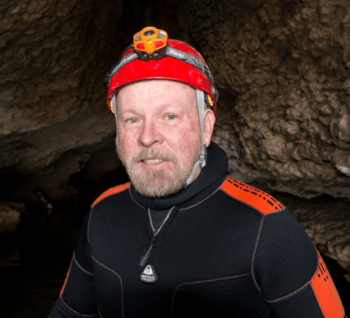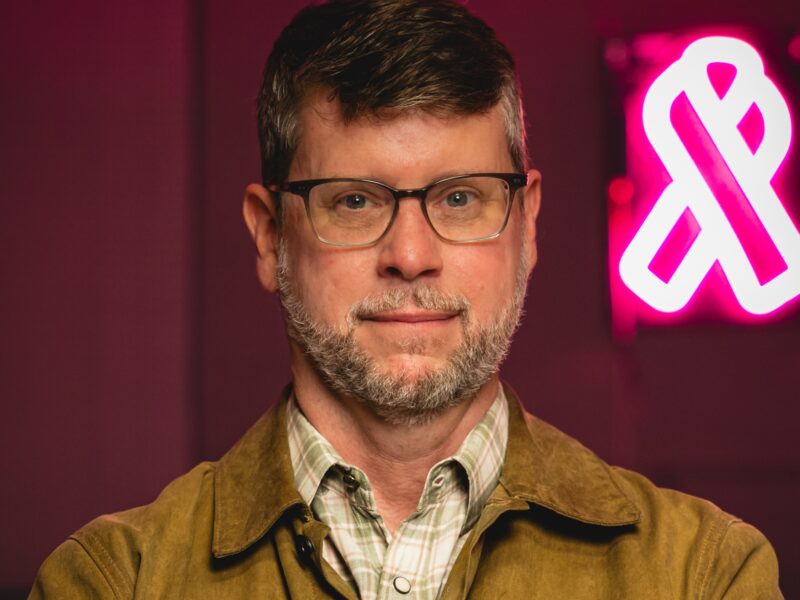Celebrating Sea Aggies: Texas A&M-Galveston Turns 50
 The coast is a place of incredible ambition where ideas are swept to sea by the tug of the tide. Float, sail or sink, it takes a strong swimmer to make it.
The coast is a place of incredible ambition where ideas are swept to sea by the tug of the tide. Float, sail or sink, it takes a strong swimmer to make it.
Fifty years ago, Texas A&M took that plunge, jumping off the Galveston Seawall and into the deep waters of higher education. Off the Gulf of Mexico’s shoreline, the establishment of Texas A&M University at Galveston was a response of Galvestonians who asked the question, “Why can’t Galveston have a maritime academy?”
It was meant as a casual question, said Stephen Curley, TAMUG regents professor and campus historian. Asked of Rear Admiral Walter Ford during Galveston’s annual Maritime Day Banquet, the party going on around them meant there was not time for a long answer by the deputy administrator of the federal Maritime Administration. But when he offered encouragement and advice, the gears started moving.
Within 24 hours, Galveston had penned and sent its first formal letter of inquiry. The response came quickly, and the first committee was formed.
At first, there were six of them, a group of businessmen along with a school superintendent, penning correspondence and gaining support from legislators as the calendar flipped from week to week. Galveston knew that it was up to the citizens to get the school started, but “they also knew they couldn’t run the school,” Curley said.
Enter Texas A&M. A&M already had a presence on the island, Curley wrote in his book Aggies by the Sea. An A&M-run marine lab was housed in part of the former army barracks at Fort Crockett, so a connection between their proposed Maritime Academy and Texas A&M seemed like the right fit. Besides, the building had extra space, and if the committee was looking for a building with history and resolve to accommodate their dream, they found it. During the First World War, Fort Crockett was used to assemble troops, and during the Second World War, it guarded the coast against German Uboats and housed German prisoners of war, Curley wrote in his book. If those walls could have talked, they would have had more than one kind of battle story—the challenge Galveston undertook to get its academy established was a fight in itself.
Because, while Texas A&M agreed that running the academy sounded like a great idea, the Galveston committee was about to run into their first big snag.

During a meeting with then university President Dr. Marion Thomas Harrington ’22, the committee learned that there was state legislation in place since 1931 that allowed Texas A&M to administer a nautical school, but prohibited the State of Texas from “ever appropriating any money for the school.”
It was a blow, yes, but, not the end. Harrington encouraged the group to get the Texas Legislature to scrap that roadblock, and then make the trip to his office for another try, Curley said. So they did, and found success in two weeks.
The success was short-lived though, as trouble followed them to the next milestone—when some shipping executives and maritime unions didn’t want an academy in Galveston—and the next—when Texas A&M started backing off from its support of the academy due to lack of funds—and the next, Curley said.
But, the citizens of Galveston kept on, and in doing so made a good friend in the new Texas A&M president, Gen. James Earl Rudder ’32. In a manner suitable only to the retired major general and D-Day hero, Curley said, Rudder redirected their efforts.
The problem now was money. The University of Houston had placed a bid to enter the state college system, Curley wrote, and that meant money would be redirected to get that school going. With no extra cash to fill the new hole in the budget, other public colleges in Texas were told to cut the excess. They wouldn’t have enough money to fund current projects, Curley wrote, let alone a new one like the Texas Maritime Academy. Like all the other public colleges, Texas A&M signed an agreement that it wouldn’t ask the State Legislature to fund any new projects, Curley said.
That agreement meant that Texas A&M could no longer endorse the Texas Maritime Academy. The loss of endorsement meant that the Galveston citizens could not petition the Commission on Higher Education, and without the Commission, they couldn’t get funding.
What a letdown—until Rudder came at them with a different idea. Since they were a collection of citizens, they weren’t under the authority of the Commission on Higher Education, he said. They could pack up their bags and completely bypass that blockade, going straight to the Legislative Budget Board for funding, Curley said.
Not knowing that this story has a happy ending, one might be tempted to throw in the towel, Curley said.
They were cussedly stubborn, he said. So they kept on, made powerful allies in State Rep. Peter Lavelle, Sen. A.R. “Babe” Schwartz ’47 and others, and made their case for establishing a nautical school in Galveston.
For four years, the committee fought innumerable obstacles, dealt with high personal sacrifice, long road trips, exciting successes, disappointing failures, close calls, and even a killer hurricane. But, on Jan. 26, 1962, triumph could finally be declared when Texas Governor Price Daniel and A&M President Rudder authorized the Texas Maritime Academy.
“And the rest is history,” Curley said.
Several hundred people attended the 1964 dedication at Fort Crockett as the campus of the Texas Maritime Academy. The federal government provided a training ship, the 15,000-ton Texas Clipper, a former passenger-cargo liner and U.S. Navy vessel, in 1965.
The Texas Maritime Academy was the forerunner of Texas A&M University at Galveston. In 1968, Galvestonian George P. Mitchell ’40 and the Mitchell-Dobbins Land Corp. provided 100 acres, and three years later added another 35 acres adjoining the Mitchell campus. In addition, TAMUG acquired the 14-acre Offatts Bayou Campus on Teichman Road, which houses the Center for Marine Training and Safety, as well as research and recreational facilities.
But even then, said Dr. Sammy Ray, “Everyone said it wouldn’t work; it’ll never work.”
Ray, a TAMUG professor emeritus and world-renowned oyster researcher, came to Galveston as an employee of the A&M Marine Lab in 1960. He heard the naysayers who said the university could never make it on its minuscule budget. He heard the opposition to having resident courses. He heard the “tsk tsks” from critics who said failure was just around the corner, and he never listened to them. “I like working on things that people think will fail,” he said. “If you believe in something strongly enough, and have persistence and are willing to not let anything deter you from that goal, good things will happen.
“If you turn up enough rocks, the answer will be under one of them,” he said.
Galveston found its answer time and time again. And, over time, Ray—who has held every position from professor to interim president, during which he even hired current Texas A&M President Dr. R. Bowen Loftin ’71—watched the student body go from a handful to around 2,000.
“I can’t believe what’s going on here,” he said. “I can’t believe how far the school has come.”
In January, Texas A&M at Galveston opened its state-of-the-art Sea Life Facility. Designed for marine research, it will also serve as a resource for the recovery of at-risk or damaged sea turtles.
The facility is part of the even bigger Ocean and Coastal Studies building that opened last year. The $53 million complex is known as the premier marine research facility on the Gulf of Mexico and earned a gold rating from the Leadership in Energy and Environmental Design.
The 55,509-square-foot Powell Marine Engineering Complex was dedicated in 2010 as the new base for the school’s engineering programs. Two new residence halls are set to open in 2012, and renovations and expansions continue across campus.
“It is incredible to see what Texas A&M at Galveston has become,” Ray said.
Yet the timeline of how Texas A&M at Galveston morphed from a school that few people thought would succeed to one known for its technology, research and high-performing graduates is lined with people, not new construction.
There are numerous experts at Texas A&M at Galveston who provide students with excellent academic training and are called upon by external communities, governments and businesses for their know-how. A sampling of these experts includes Dr. Samuel Brody, who led the team that created the Coastal Communities Planning Atlas–an interactive, online atlas that provides maps of the Texas coastline and helps predict its future.
“I want to make Galveston a gateway for research by looking at the entire Gulf Coast, not just the Texas coast,” said Brody, professor of marine sciences and urban planning, director for the Center for Texas Beaches and Shores, and the George P. Mitchell ’40 chair for sustainable coasts. Coastal sustainability is our future, he said. Examples of not doing it right are everywhere—from hurricanes to tsunamis. “Yet, at the same time, we keep growing on the coast and adding more and more people,” he said.

While Brody looks at the coastline, Dr. Tom Iliffe, professor of marine biology, surveys the depths of the ocean. Iliffe has been featured in multiple publications, including a cover of National Geographic (and this cover of Texas Aggie) for his research expeditions into marine and freshwater caves around the world. He’s explored flooded caves worldwide, during which he and other scientists have discovered more than 300 new species of organisms.
“It’s important to understand our planet, to understand the evolution and origin of life on it,” he said. The Remipedia class of organisms—a type of “living fossil,” Iliffe said—was first documented in 1981. “Up to now, we have 25 different species of these, and I found about half of them.”
He dives to dangerous depths in treacherous conditions. “When you’re diving in a cave, you never know what might be around the next corner,” he said. “You’re going into places that are unexplored and where no human has ever been before.”
Then there’s Dr. William Merrell ’71, the George P. Mitchell ’40 chair in marine sciences, who is the only person to have received the Distinguished Service Award from the National Science Foundation twice. He’s a former vice chancellor for The Texas A&M University System, university president at TAMUG, and founding president of the Heinz Center in Washington, D.C. He’s also the brain behind the Ike Dike, a 17-foot-high wall that could stretch along the Texas coast to protect citizens and land from hurricanes. Merrell saw how well a coastal barrier can work as a protectant when he was in the Netherlands for the Ocean Drilling Program, an international effort to study the composition and structure of the world’s ocean basins. It remains the largest project that Texas A&M has ever had, he said. The Ike Dike promises to be just as impressive.
“We’re working on different approaches that can protect this area from hurricane surges – how we deal with the more destructive forces of nature- how to keep the environment and the economy going,” he said.
He’s an idea man, he said. That’s what universities are supposed to do, find new and better ways of doing things. “And we do,” he said. “And we’re having a good time at it.”
As Texas A&M at Galveston continues to be recognized as one of the global players in the pursuit of knowledge, the university gets better students, more research money and more acknowledgment, he said.
“In a broad sense, the whole world is moving to the coast,” he said. “That Texas A&M has a coastal campus means the university can continue to be in the middle of the most exciting discoveries.”
Another notable TAMUG professor, Dr. Bernd Würsig, is among the world’s most renowned marine biologists and was the first to discover one of the reasons dolphins leap. By studying dolphins, whales, porpoises and other cetaceans in the wild, Würsig is able to understand more about these awe-inducing creatures.
He was instrumental in discovering the openness of dolphins’ societies, documenting that they live in fluid groups, joining and leaving communities easily. “They all seem to know each other and have highly organized social structures,” he said.
Back in the 1990s, he developed a photographic identification program that uses images of a dolphin’s dorsal fin; it’s now used worldwide. Students have joined in on his research, helping to track and identify dolphins using photographs.
Another celebrated TAMUG expert is chemical engineer and organic chemist Dr. Alexandru T. Balaban, who sits on a list of “most famous chemists in central and Eastern Europe.” Balaban discovered a new synthesis for pyrylium salts—salts which express the extremes to which one can push chemical stability related to building blocks of our DNA genetic material. Balaban seeks to understand these limits. Balaban also focuses on chemical applications of graph theory, which could lead to the creation of new medicinal drugs. Using mathematical equations known as the Balaban Index, he can correlate chemical structures with certain biological activities. As a consequence, biological testing could lead to new medicinal drugs.
Balaban was born in Romania and has taught in Bucharest and presented lectures all over the world. With each discovery, Balaban said, he is “adding new bricks to the tall tower that represents the advancement of science.” With each semester that brings a classroom full of students, he is happy to share his enthusiasm for science in general, and chemistry in particular.
Dr. William Seitz is Texas A&M at Galveston’s senior vice president and chief academic officer and TAMU’s associate provost. Seitz works on the complexity theory, which “is a catchall for how one tries to understand systems that have multiple components,” he said.
“When a system has so many interconnected parts, you can’t predict what’s going to happen over time,” he said. This area of research is sometimes referred to as Chaos Theory. Seitz also works with coastal erosion and policy-making. In the 1980s, working with colleagues in Galveston, he was involved very early in the field of nanotechnology, working to understand the stability and structure of “buckyballs.”
The discovery of buckyballs, soccer ball-shaped molecules made up of 60 atoms of carbon , inaugurated the field of nanotechnology. “They revolutionized material science and the world,” he said. “They’re everywhere.”
They’re everywhere. It’s a fitting phrase for Texas A&M at Galveston. The university’s and maritime academy’s students, professors, scientific findings and the maritime academy’s merchant marine officers, naval officers and reputation continue to grow, passing regional, state and national boundaries. Just as the full story of Texas A&M at Galveston could never be told with a word limit, neither can its discoveries.
In 50 years, a little university on the coast that no one thought would make it has been part of discoveries and people who have changed the world.
This article, written by Stephanie Cannon, originally appeared in the March-April issue of Texas Aggie magazine, a publication of The Association of Former Students.





